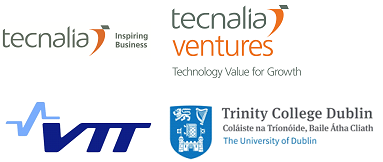Project duration: 1 January 2020 – 31 December 2022
Objective
UNEXUP converts R&D results from the UNEXMIN project into a commercial service to resurvey Europe’s flooded underground mines. Improvements will be made to the UX-1 research prototype, raising technology readiness to TRL 7/8. A “real service-to-real client” approach will be demonstrated, supporting mineral exploration and mine surveying efforts in Europe with unique data from flooded environments that cannot be obtained economically otherwise.
The solution (technology)
The purpose of UNEXUP is to commercially deploy a new mineral exploration / mine mapping service based on a new class of mine explorer robots for the re-surveying of Europe’s flooded mines that cannot be explored by any other means. The inaccessibility of the operational environment makes autonomy a critical and primary objective of the project that will represent a substantial effort in re-surveying mineral deposits in Europe where the major challenges are the geological uncertainty, technological and economic feasibility of mine development. UNEXUP will open up long-term cooperation possibilities between Europe’s raw materials (mining, surveying, geological consulting, etc) and robotic technology provider sectors where the aim is to reduce the current high and growing costs for exploration. Our robot’s ability to bring back high-quality, high-resolution information from currently inaccessible mine sites will also increase our knowledge of mineral deposits in Europe whilst decreasing exploration costs (such as the number of expensive deep drills needed).
UNEXUP will strenghten an already existing autonomous robotic solution deriving from the Horizon 2020 funded project UNEXMIN (Underwater Explorer for Flooded Mines, www.unexmin.eu), to explore underground flooded mines otherwise inaccessible without high costs and human risks. As a result of UNEXUP a novel surveying system will be introduced to the European market that will have the ability to produce geological, mineralogical and spatial information in the safest way possible from flooded mines and other underwater confined environments, filling a specific market need that is not currently covered. The project targets stakeholders from the mining, robotics and mineral exploration sectors as well as all other sectors that have any kind of underwater structure that needs to be surveyed – caves and fisheries are among them.
The robotic platform will be tested in a number of sites across Europe that will prove the concept up to a near-market level (TRL 7/8). This will be achieved by using the technology to survey flooded mines and retrieving important geological and spatial information that can lead to considerations on the reopening of mines across Europe, while using a sustainable and cost effective exploration technology. UNEXUP technology is inline with the current European policy and EIT Raw Materials Strategic view on raw materials and works towards its objectives. In the end UNEXUP will directly and indirectly create jobs, foster economies and contribute to solve the raw materials dependency within Europe, that will strenghten its industry.
UNEXUP is meant to be a continuation of the UNEXMIN project, funded the EC H2020 programme. In UNEXUP we will raise technology readiness levels and deliver a corresponding commercial service. A fourth modular robot will be added to the current multi-robot platform providing additional functionalities including better range and depth performance. This upgraded robot will also have the capacity to rescue any of the other robots, improving the commercial and financial security of mine surveying missions. These added functions arise from different stakeholder engagement dialogues from the UNEXMIN project.
To deliver this innovative and challenging solution, the project brings together a consortium focused on robotics, raw materials and mineral exploration that includes three SMEs, universities, research centres.
Partnership
- Geological Survey of Slovenia (GeoZS), Slovenia
- Institute for Systems and Computer Engineering, Technology and Science, Portugal
- La Palma Research Centre for Future Studies SL, Spain
- RESOURCES COMPUTING INTERNATIONAL LTD, United Kingdom
- Tampere University (TAU), Finland
- UNEXMIN GeoRobotics, Hungary
- Technical University of Madrid, Spain
- University of Miskolc (Lead Partner), Hungary







